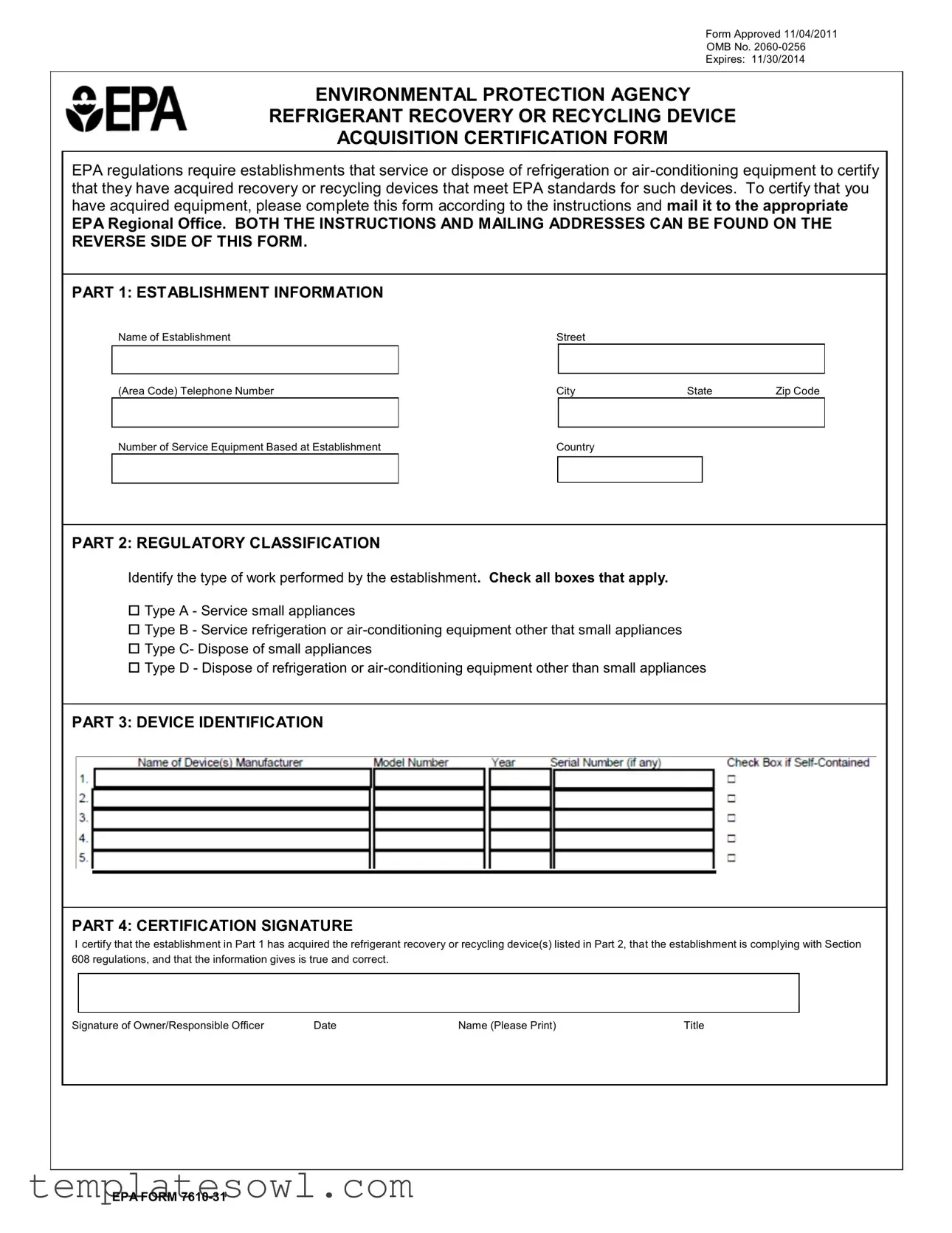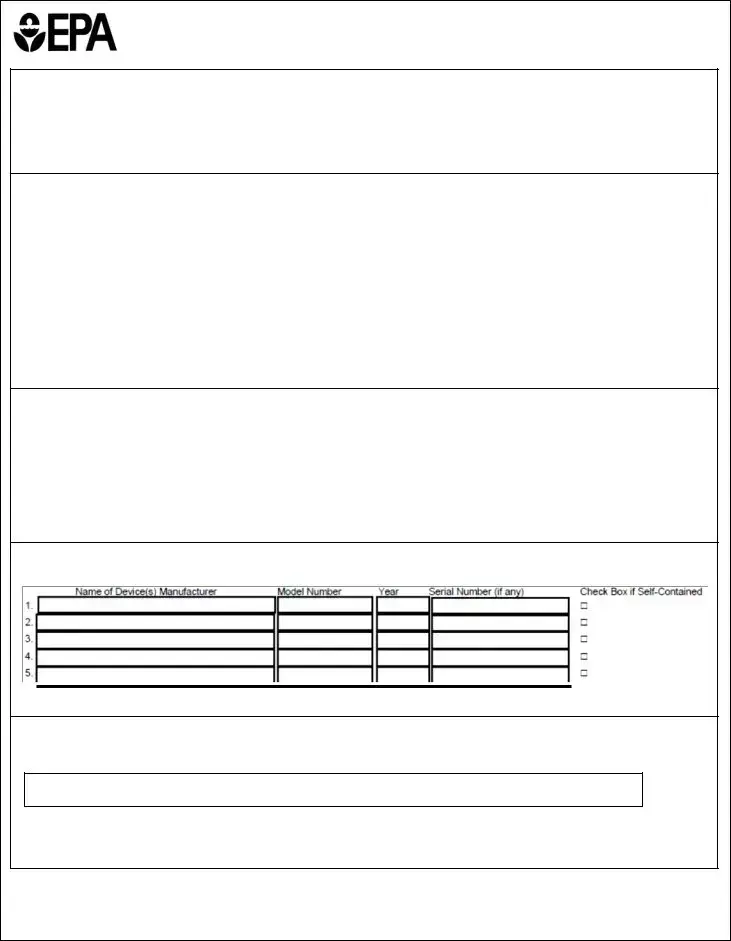EPA REGIONAL OFFICES
Send your form to the EPA office listed under the state or territory in which the establishment is located.
Connecticut, Maine, Massachusetts, New Hampshire, Rhode Island, Vermont
CAA 608 Enforcement Contact: EPA
Region I; Mail Code OES04-2; 5 Post
Office Square; Boston, MA 02109
New York, New Jersey, Puerto Rico, Virgin Islands
CAA 608 Enforcement Contact: EPA
Region II; Mail Code 2DECA-AC; 290
Broadway; New York, NY 10007-1866
Delaware, District of Columbia, Maryland, Pennsylvania, Virginia, West Virginia
CAA 608 Enforcement Contact: EPA
Region III-Wheeling Office; Mail Code
3AP20; 1060 Chapline Street, Suite 303
Wheeling, WV 26003-2995
Alabama, Florida, Georgia, Kentucky,
Mississippi, North Carolina, South Carolina,
Tennessee
CAA 608 Enforcement Contact: EPA Region IV; Mail Code APT-AE; 61 Forsyth Street, SW; Atlanta, GA 30303-8960
Illinois, Indiana, Michigan, Minnesota, Ohio, Wisconsin
CAA 608 Enforcement Contact: EPA
Region V; Mail Code AE-17J; 77 West
Jackson Blvd.; Chicago, IL 60604-3507
Form Approved
OMB No. 2060-0256
Expires: 11/30/2014
Arkansas, Louisiana, New Mexico, Oklahoma, Texas
CAA 608 Enforcement Contact: EPA Region VI; Mail Code 6EN-HM; 1445 Ross Ave., Suite 1200; Dallas, TX 75202
Iowa, Kansas, Missouri, Nebraska
CAA 608 Enforcement Contact: EPA
Region VII; Mail Code APCOAWMD; 901
11201 Renner Boulevard
Lenexa, Kansas 66219
Colorado, Montana, North Dakota, South Dakota, Utah, Wyoming
CAA 608 Enforcement Contact: EPA Region VIII; Mail Code 8ENE-AT; 1595 Wynkoop Street, Denver, CO 80202
American Samoa, Arizona, California, Guam, Hawaii, Nevada
CAA 608 Enforcement Contact: EPA Region IX; Mail Code AIR-5; 75 Hawthorne Street; San Francisco, CA 94105
Alaska, Idaho, Oregon, Washington
CAA 608 Enforcement Contact: EPA Region X; Mail Code OAQ-107; 1200 Sixth Ave.; Seattle, WA 98101




